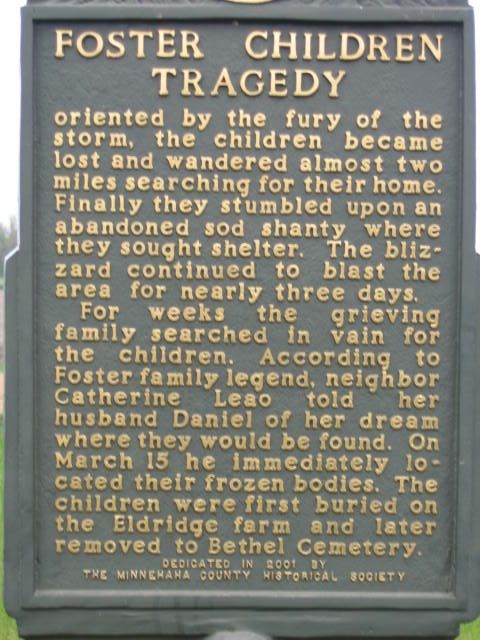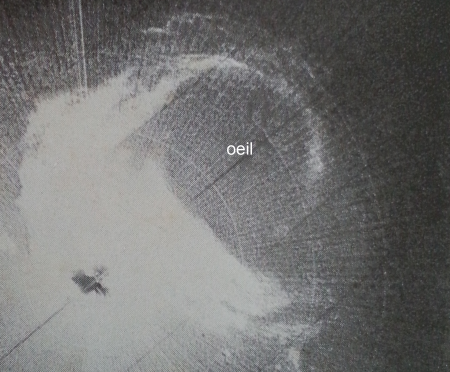
A strong atmospheric river will continue heavy rain over southern California through Friday. The heaviest rainfall is ongoing today in the Los Angeles Basin. Flash and urban flooding is possible. A prolonged heavy snowfall has begun over the Sierra Nevada Mountains and will continue through Friday. Travel will become increasingly difficult over the passes due to snow and strong winds. Read More >
Weather History - January 7th
Local and Regional Events:
January 7, 1873:
A blizzard raged across the Great Plains. Many pioneers, unprepared for the cold and snow, perished in the tristate region of southwest Minnesota, northwestern Iowa, and southeastern South Dakota. Visibility was down to three feet. Cows suffocated in the deep drifts, and trains were stuck for days. More than 70 people died; some bodies were not found until spring.
The following appears on pages 260-261 in the "History of Dakota Territory" by George Kingsbury. "On the 7th of January, 1873, a brother and sister of "John Foster," aged respectively fourteen and twelve years, went a short distance from home and soon afterward a blizzard came up suddenly. The children wandered in the storm to an old sod house that stood out on the prairie and there sought shelter from the driving snow. However, as the house was roofless, it afforded but poor protection against the blizzard, and the children perished, their bodies being buried in the snow. Our subject and the father were absent from home at the time. Weeks passed, and despite continued searching, the bodies of the children were not found, but in March, a neighbor dreamed that the children were in the old house, and on the 16th of that month, their bodies were found there."


January 7, 1980:
A strong area of low pressure moved out of the northern Rockies across South Dakota and central Minnesota on January 6th and 7th. Heavy snow, along with very high winds, caused widespread blowing and drifting snow with low visibilities. Many roads were closed, and many motorists were stranded. Snowfall amounts across western and northern Minnesota were from 7 to 12 inches.
January 7, 1989:
Heavy snowfall of 5 to 19 inches fell in the north and east-central South Dakota on the 6th and 7th. Snow and blowing snow reduced visibilities to near zero in many locations as winds gusted to near 50 mph. Part of Interstate 29 north of Sisseton closed the night of the 7th. Icy roads contributed to a school bus accident that injured eight boys. Extreme wind chills of 30 to 60 below also occurred. Snowfall amounts included 8 inches in Sisseton, with 12 to 19 inches across Marshall and Roberts counties.
This storm also affected northern Minnesota from the 6th through the 8th with heavy snowfall of 8 to 12 inches with local amounts of 24 to 26 inches. The heavy snow was followed by an Arctic intrusion, which brought in 35 to 50 mph winds. Snowdrifts were from 5 to 10 feet in some areas. The strong winds caused near-blizzard conditions along with extremely low wind chills.
U.S.A and Global Events for January 7th:
1966: Tropical Cyclone Denise dropped 45 inches of rain on La Reunion Island in the Indian Ocean in 12 hours and 71.80 inches of rain in 48 hours through the 8th. Click HERE for more information from Meteo France. Please note, the webpage will load in French.

1989: Empty foundations are all that remain of four homes on the southwest end of Allendale, Illinois after an F4 tornado ripped through. The tornado was extremely rare due to its strength and the fact that it occurred so far north during the middle of meteorological winter.

2008: A rare, EF3 tornado tracked across southeastern Wisconsin. Experiencing a tornado in Wisconsin in January is extremely rare. In fact, it had only happened once between 1950 and 2007, when an F3 tornado affected parts of Green and Rock Counties on January 24, 1967. That tornado in South Central Wisconsin was part of a much larger outbreak of 30 tornadoes across mostly Iowa, Illinois, and Missouri. Wisconsin ended up with 30 tornadoes in 1967. Click HERE for more information from Archive.org.
Click HERE for more This Day in Weather History from the Southeast Regional Climate Center.